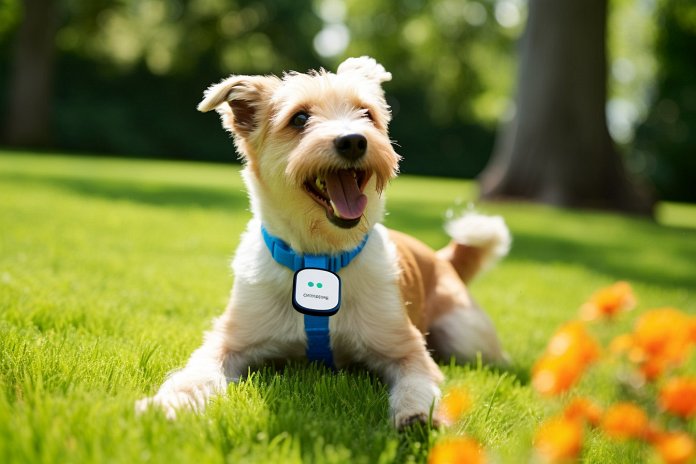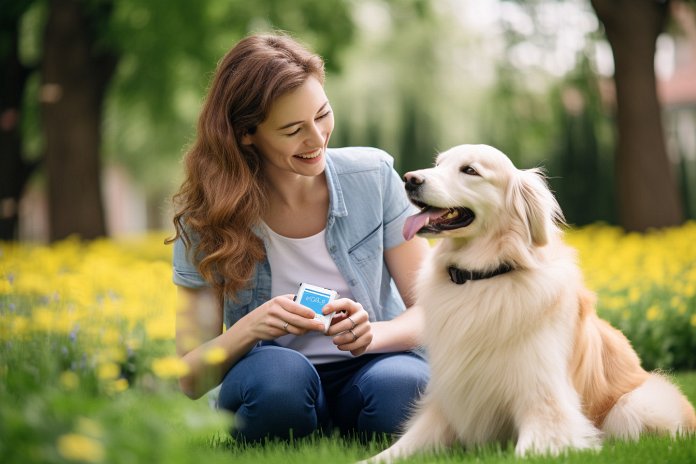
Animals can sense changes in our physiology, and dogs in particular have a heightened ability to sense these changes. Dogs have been trained to assist humans with various medical conditions, including detecting changes in blood sugar for diabetics. In this article, we will explore how dogs are able to do this and the benefits it provides.
Signs & Body Language to Look for
Dogs that can sense drops in blood sugar will typically show signs of discomfort or anxiety through their body language. Trained dogs may directly get their owner’s attention by pawing at them or jumping up on their knee. Some general signs to look for include nudging, barking, and guarding their human. Dogs may also exhibit alertness and uneasiness when sensing a change in blood sugar, which can be seen in their overall demeanor.
Body Language
Different dog breeds may exhibit different signs when sensing changes in blood sugar levels. Retrievers and Labs are often used as detection dogs due to their size and quick learning abilities. Some signs to look for include alertness, barking, guarding, and jumping up. Other signs may include restlessness, barking until someone responds, and carrying out a trained behavior.
History of Diabetic Alert Dogs
Diabetic alert dogs have been used for many years, but little research has been done on their efficiency given their high cost. These dogs are also trained to seek medical assistance in emergencies. Recent case studies have shown that these alert dogs were only able to detect drops in blood sugar around 40% of the time, compared to technological devices with an efficiency rate of 70%. However, alert dogs provide comfort and peace of mind through companionship, which devices cannot offer. It is recommended to use glycemic alert dogs as a supplementary precaution.
The Science of Dogs Smelling Diabetes
The ability of dogs to detect drops in blood sugar is fascinating and is attributed to their highly sensitive sense of smell. When blood sugar drops, there is an increase in the chemical isoprene in a person’s breath. Dogs are believed to smell this change in chemical makeup when a person exhales. Dogs may also sense subtle changes in a person’s demeanor, such as sweating or shaking, that signal a drop in blood sugar.
Training a Diabetic Alert Animal
Training dogs to detect drops in blood sugar is challenging due to the gap between scientific knowledge and practical training. Formal training by specialized organizations involves rigorous strategies, including introducing dogs to the jacket they will wear and rewarding them for alerting to changes in blood sugar. Not all dogs can be trained for this task, as it requires a highly skilled animal. However, some dogs may naturally alert on blood sugar drops without specific training. It is important to keep a record of their alerts and check their accuracy during the early stages of owning a diabetic alert dog.
“Dogs have an incredible ability to sense changes in our physiology, including drops in blood sugar. Their keen sense of smell and intuitive nature make them valuable companions for individuals with diabetes.”

Tips & Things to Know
1️⃣ Pay attention to your dog’s body language: Dogs that are trained to sense changes in blood sugar levels will exhibit discomfort or anxiety. Look for signs such as nudging, barking, guarding, or jumping up to get your attention. It is important to be aware of your dog’s overall demeanor, as it may indicate concern or anxiousness.
2️⃣ Understand that different breeds have different sensing capabilities: Retrievers or Labs are often used as detection dogs due to their size and quick learning abilities. However, it is important to remember that each individual dog may vary in their ability to sense changes in blood sugar. Therefore, reading your specific dog’s body language and training them accordingly is crucial.
3️⃣ Consider diabetic alert dogs as a supplementary precaution: While diabetic alert dogs provide a sense of comfort and companionship, it is important to acknowledge that their efficiency in detecting blood sugar drops may not be as high as technological devices like continuous glucose monitors (CGMs). These alert dogs should be viewed as an additional precaution rather than a replacement for medical devices.
Frequently Asked Questions, Answered ✅
1. How are dogs able to sense changes in blood sugar levels?
– Dogs have a highly sensitive sense of smell and can detect spikes in the chemical isoprene in a person’s breath when their blood sugar drops.
2. What are the signs and body language that dogs exhibit when sensing a change in blood sugar?
– Dogs may nudge, bark, and jump up to alert their owner. They may also exhibit signs of restlessness, guarding behavior, and increased alertness or anxiousness.
3. Are all dogs able to detect changes in blood sugar levels?
– Some dogs are more skilled in sensing changes in blood sugar, with breeds like Retrievers or Labs often used as detection dogs due to their size and quick learning capabilities.
4. How efficient are diabetic alert dogs in detecting drops in blood sugar?
– Research suggests that diabetic alert dogs are only able to alert around 40% of the time before a significant drop is seen. Technological devices like continuous glucose monitors (CGMs) have a higher efficiency rate of 70%.
5. Can any dog be trained to be a diabetic alert animal?
– It is not recommended to train any dog to be a diabetic alert animal without proper expertise. Formal training by specialized organizations is rigorous and involves positive reinforcement and rewards for alerting to drops in blood sugar. Some dogs may naturally alert on blood sugar drops, but their accuracy should be monitored and recorded to ensure their effectiveness.